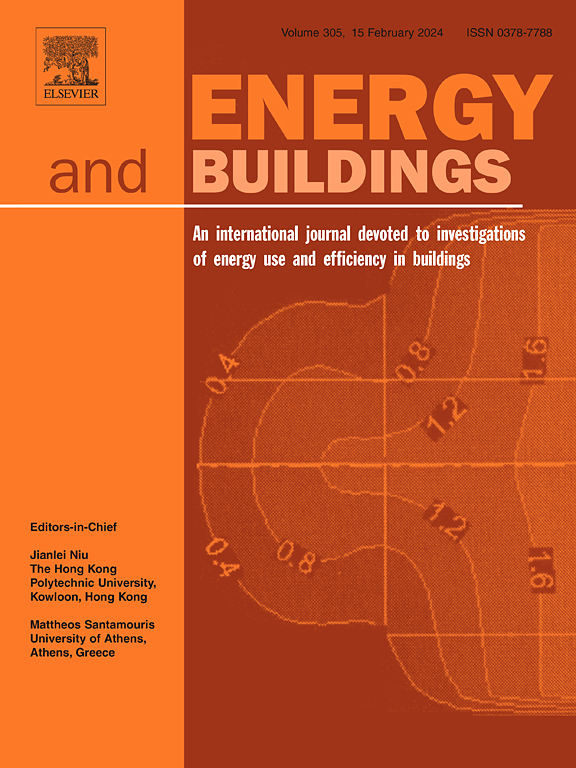1980 至 2020 年安第斯地区住宅建筑的运行能耗和体现能耗
IF 6.6
2区 工程技术
Q1 CONSTRUCTION & BUILDING TECHNOLOGY
引用次数: 0
摘要
建筑中的运行能耗(OE)和体现能耗(EE)之间的关系是一个非常复杂的问题。在气候极端且可持续发展标准较高的国家,人们会努力通过材料和技术来降低OE,从而提高EE。厄瓜多尔安第斯地区等非极端气候地区的情况则不同。建筑物中引入了新的建筑系统和建筑元素,以复制在其他气候条件下采用的模式,从而增加了能源效率。然而,目前仍不清楚这些变化对运行能耗和总生命周期能耗有何影响。为了评估这些建筑变化的影响,我们对厄瓜多尔昆卡市 1980 年至 2020 年间建造的 40 栋住宅楼进行了分析。这些建筑的 OE 值是通过能源模拟、测量验证(供暖加制冷、照明加电器)和数学计算(生活热水加烹饪)获得的。这些建筑的能源效率值是通过先前的研究获得的。研究结果表明,厄瓜多尔安第斯地区建筑物的总生命周期能源有所增加:在过去的四十年中,能效值从 1643 兆焦耳/平方米上升到 3600 兆焦耳/平方米,供暖和制冷的消耗臭氧层物质也在增加(从 1000 兆焦耳/平方米上升到 2195 兆焦耳/平方米),这也增加了建筑物的总生命周期能耗。与其他国家不同的是,在其他国家,OE 需求的减少会导致 EE 的增加,而在本研究案例中,EE 的上升趋势会导致 OE 需求的增加。本文章由计算机程序翻译,如有差异,请以英文原文为准。
Operational and embodied energy of residential buildings in the Andean region between 1980 and 2020
The relationship between operational energy (OE) and embodied energy (EE) in buildings is a highly complex issue. In countries with extreme climates and high sustainability standards, efforts are made to reduce OE for climatization with materials and technologies that eventually increase the EE. The case of non-extreme climates such as the Ecuadorian Andean region is different. New building systems and construction elements are introduced in buildings to replicate the model adopted in other climates and, consequently, EE experiments an increase. However, it remains unclear what impact these changes have on OE and in the total life cycle energy. To assess the effects of these construction changes, 40 residential buildings constructed between 1980 and 2020 in Cuenca, Ecuador, were analyzed. Their OE was obtained through energy simulations validated with measurements (Heating plus Cooling, Lighting plus Electrical Appliances) and mathematical calculations (Domestic Hot Water plus Cooking). Their EE values were obtained from prior research. The findings indicate that buildings in the Ecuadorian Andean region have experienced an increase in total life cycle energy: EE has risen from 1643 to 3600 MJ/m2 over the last forty years, and OE for heating and cooling has also increased (from 1000 to 2195 MJ/m2), also increasing the total life cycle energy of the building. Unlike in other countries where a reduction in OE demand leads to an increase in EE, in the studied case, the upward trend in EE results in an increase in OE demand.
求助全文
通过发布文献求助,成功后即可免费获取论文全文。
去求助
来源期刊

Energy and Buildings
工程技术-工程:土木
CiteScore
12.70
自引率
11.90%
发文量
863
审稿时长
38 days
期刊介绍:
An international journal devoted to investigations of energy use and efficiency in buildings
Energy and Buildings is an international journal publishing articles with explicit links to energy use in buildings. The aim is to present new research results, and new proven practice aimed at reducing the energy needs of a building and improving indoor environment quality.
 求助内容:
求助内容: 应助结果提醒方式:
应助结果提醒方式:


